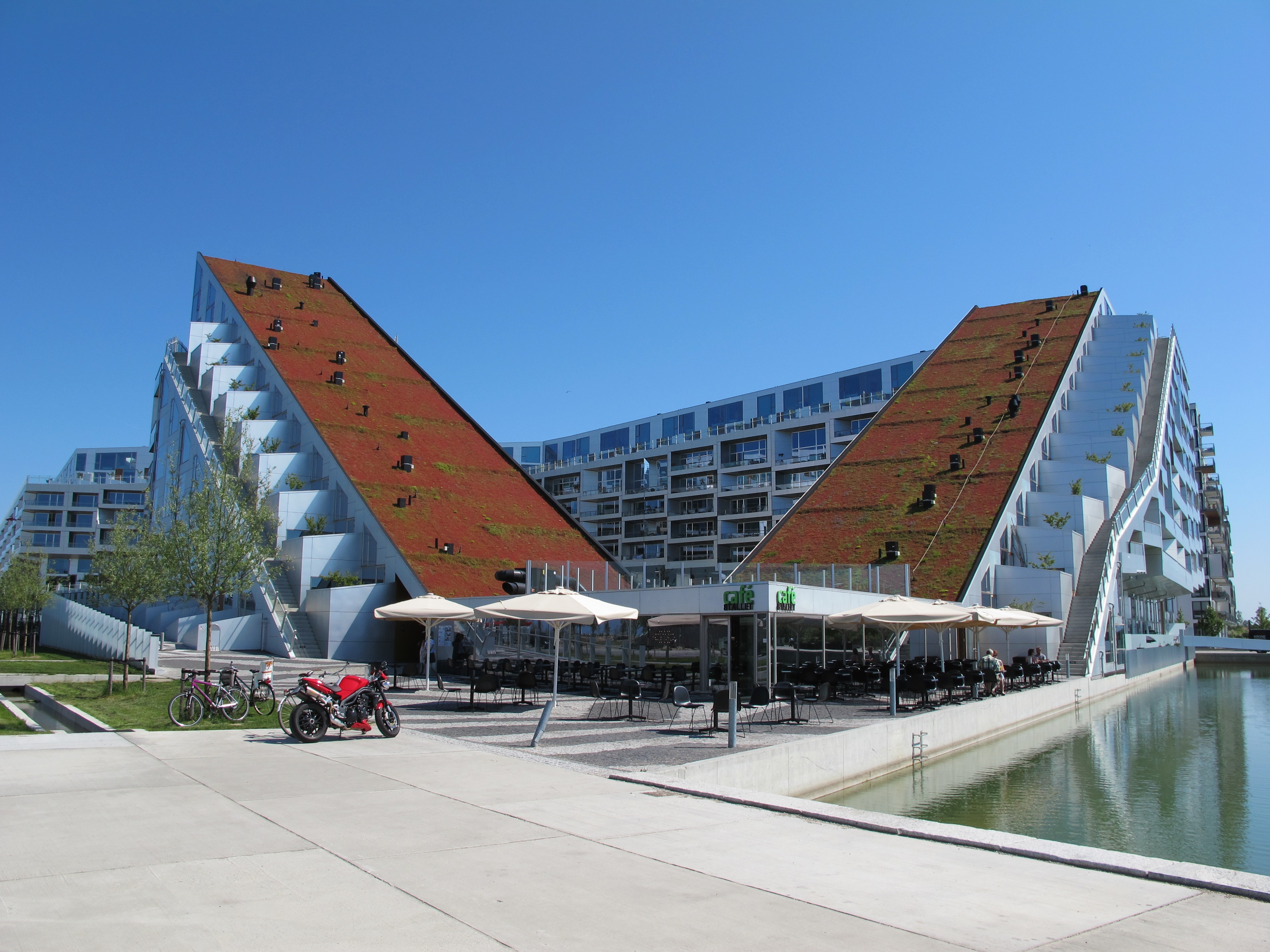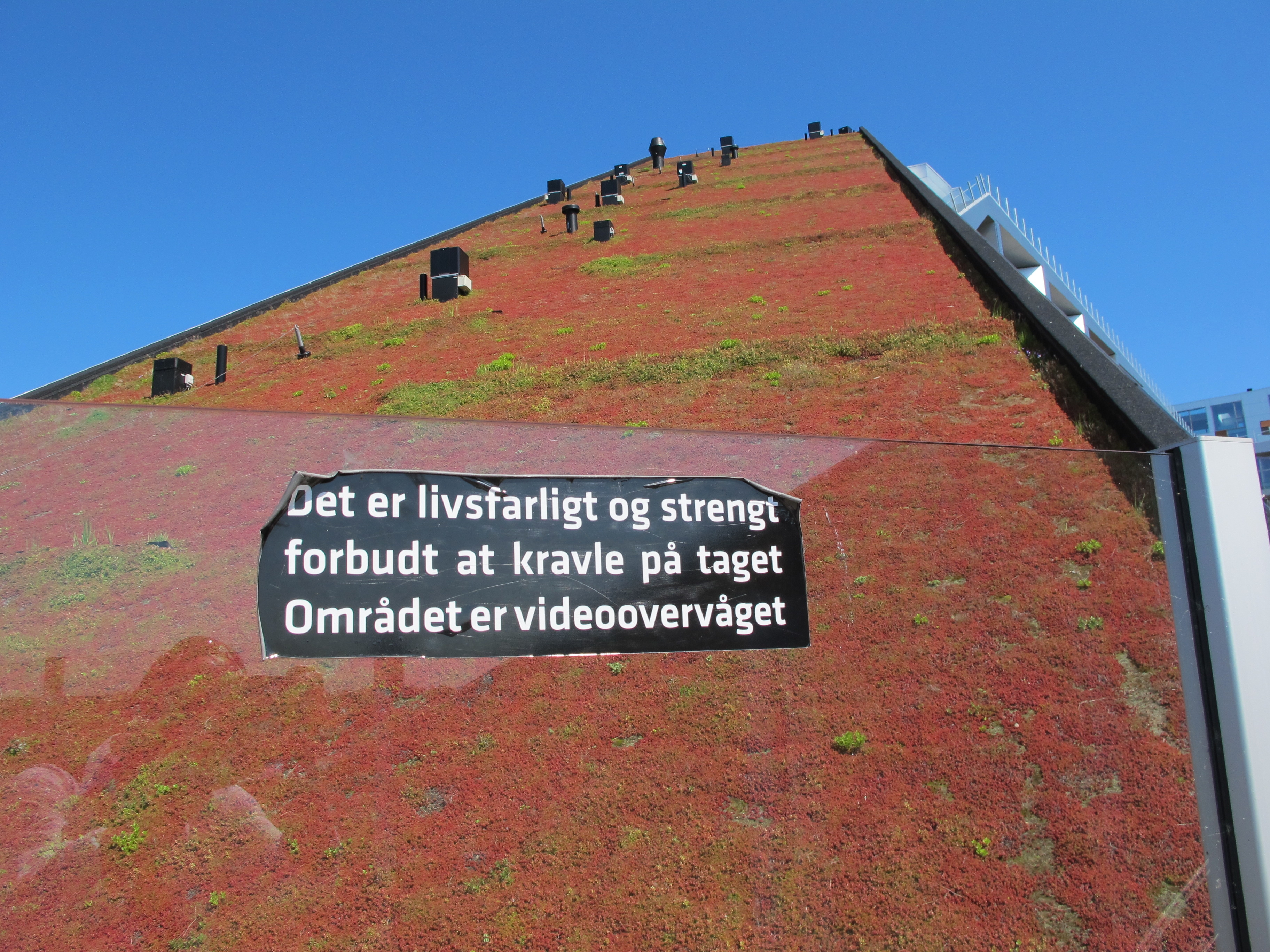The award-winning green roofs for the 8 House housing development in Copenhagen have received national and international recognition. Eighty percent of the water falling onto the roofs evaporates and is delayed from running off.
The 8 House development in Ørestaden near the city centre of Copenhagen is in many ways a spectacular building. It was designed by the Bjarne Ingels Group (BIG), one of the currently most renowned Danish architectural firms, which was also behind the VM Houses and the Mountain Dwellings in Ørestaden. The building is located on the southern-most point of Ørestaden, overlooking the listed natural area of Kalvebod Fælled, and the building has won several prizes.
The 8 House, which was named after its shape in plan view, was awarded the 'World Housing Building of the Year' at the World Architecture Festival in Barcelona in November 2011. For that reason alone, the building, which houses a day care centre, 476 flats, penthouses and townhouses, a café, businesses and shops, has rapidly become a popular attraction for tourists as well as professionals who want to study the building close-up.
Many birds with one stone
The building's two sloping green roofs, that stretch from the café area to the 10th floor, have also attracted curious visitors. Architecturally, the roofs provide a conclusion for the building and introduce the large courtyard opening towards the newly built flood retention basin and the open countryside of Amager Fælled. By "pushing down" the ends of the building, and thereby creating the 70-metre-long slanting surfaces, the architects have killed several birds with one stone. Inhabitants benefit from the daylight in the courtyard, and are also presented with a spectacular view.
Moreover, the impressive green roof surfaces have become a symbol for the entire area. Seen from a climate-change-adaptation perspective, about 80% of the rain falling onto the surfaces evaporates and is delayed via the sedum-covered roof surfaces. The rest of the water is led down to the basin. At the same time, the 1,700 square metres of green surfaces help combat the heat-island effect. The original idea was that all roof surfaces should be covered with plants, but the idea was rejected in the planning stage for financial reasons.

Photo 1: The building's two sloping green roofs stretch from the café area to the 10th floor. The roofs slope at 30 and 32 degrees, respectively.
Even sedum can become too dry
"The two roof surfaces face south and west and are therefore completely unprotected. At the same time, the limit for green roofs is normally a gradient of about 27 degrees. However, the two roofs of 8 House slope 30 and 32 degrees, respectively. This may not sound like much, but the two surfaces are actually quite steep, and it is important to find a solution to avoid erosion", said Ulrik Reeh, Managing Director for Veg Tech in Denmark (the firm is Swedish).
The solution was therefore to lay out tightly linked sections of eight-square-metre mats with a drainage plate, one layer of felt and a synthetic reinforcement mesh with 3 cm soil and moss-sedum vegetation. This is a light and thin covering, consisting of small drought-tolerant sedum plants which, under the right conditions, can stay free of weed. One great advantage of this type of vegetation is that is does not have to be maintained other than with small amounts of fertiliser once or twice a year. The actual foundation is slate-shingled roofing felt.
"Even though sedum plants tolerate drought well, a period of two weeks without any rain can be too dry, and increase the risk of weed and dark mosses taking over. Therefore, the roofs have been fitted with an automatic installation that waters the plants once a week. The water comes from a tap in the maintenance room, but the more environmentally correct solution would have been to utilise the water from the flood-retention basin," said Ulrik Reeh.

Photo 2: The moss-sedum vegetation is a light and thin covering, consisting of small drought-tolerant sedum plants, requiring a minimum of maintenance.
A solution you cannot find in textbooks
The actual fitting of the mats took almost three weeks. "This is a little longer than normal," said Ulrik Reeh, but the steep surfaces and strong winds meant that working conditions for Veg Tech employees on the roofs were not optimal, even though all safety precautions were taken.
"I was constantly on the mobile phone with the people fitting the mats on the roof. At one point, I received a call from one of our employees. We are not allowed to wear spiked shoes on the roof because they can perforate the foundation. 'Do you have a pair of football boots,' he asked. I happened to have a pair in my car, and they turned out to serve the purpose very well," said Ulrik Reeh, who is often asked about the green roofs of 8 House.
"There is no doubt that this assignment has helped attract attention to the building itself as well to green roofs in general here in Denmark and abroad. Not many green-roof surfaces cover an area this large and are this steep, therefore there is not much help from the textbooks," he said.
In August 2010, BIG architects received the Scandinavian Green Roof Award for the best green roof in Scandinavia on the top of 8 House in Copenhagen's Ørestad.